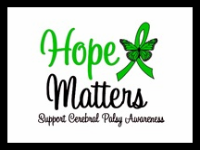Meet Maddison, a sweet girl in England with SMARD. This story is from the website
thisisnottingham.co.ukPoorly Maddison Enjoyed a Happy First BirthdayHOLDING her birthday card with a big smile on her face, Maddison Sherwood looks extremely happy for a little girl who is so poorly.
Born with a rare genetic condition, she has spent most of her life in hospital.
This week, she celebrated her first birthday at the Queen's Medical Centre – and her parents Lidia and Jamie hope she could be home by the end of November.
"We are very proud of her," said Mrs Sherwood. "She doesn't seem like a sick child. She's really happy considering what she's got.
Maddison's condition – called Spinal Muscular Atrophy with Respiratory Distress (SMARD) – means that even catching a common cold could be life-threatening.
Between one in 100,000 and one in 200,000 babies are thought to be born with the condition, which causes muscle to waste away.
"She gets chest infections really easily because she's got a weak cough," explained Mrs Sherwood.
"You need muscles to cough – that's why it's life-threatening because she can't cough, so the secretions sit on her lungs."
Maddison has been in intensive care four times and will never be able to breathe on her own. She was born with club foot, where the feet are twisted towards each other, which is thought to be a symptom of SMARD.
Maddison was only diagnosed after she kept getting chest infections. An X-ray also showed she needed an operation on her diaphragm, which is paralysed.
"She has only been at home for three weeks," said Mrs Sherwood.
Each child of carrier parents has a one in four chance of being affected. They had no idea they were both carriers of the gene until Maddison was diagnosed.
Maddison's sister, Lacey, seven, and brothers, Harley, four, and Jayden, two, will also need to be tested to see if they are carriers.
Before Maddison can come out of hospital, her home in East Leake needs to be adapted so she can live downstairs, and she will need 24-hour care.
Maddison's parents hope she will be able to attend a normal school.
"Her hands and feet are weak at the moment. As she gets bigger it's going to be hard to look after her, so we will see."
August is Spinal Muscular Atrophy Awareness Month and Mrs Sherwood wants to raise awareness of all types of the condition.
There is no cure for SMARD, but research is being done into stem cell replacement.
"The hospital has been brilliant," added Mrs Sherwood. "They've never had a child with it and they've always been one step ahead, so if it weren't for them she wouldn't be here today."
A spokesperson for The Jennifer Trust, which supports people with the condition, said: "Many babies born with Smard don't survive very long, whereas Maddison seems to be doing well."
On August 16, a fund-raising event called Maddison's Sunday Fun Day is being held at The Three Horseshoes pub, Main Street, East Leake. It starts at 2pm. Money raised will be used to help the family make the adaptations to their home.
CAROLINE LOWBRIDGE



















